Original URL: https://www.theregister.com/2013/09/16/feature_the_new_space_pioneers/
From launch to orbit: The new commercial space pioneers
Who’s who in the new astronautics industry
Posted in On-Prem, 16th September 2013 09:04 GMT
Feature We all know that many 20th century prophecies of life in the new millennium never came to pass. Among them were flying cars, meals-in-a-pill and annihilation by Skynet, to name but a few. However, taking the crown of unfulfilled expectations has to be private spaceflight for business or pleasure.
With all the rapid space tech development that took place in the 1960s and 1970s, it wasn’t entirely beyond reason for the public to ponder planning a holiday to the moon or their retirement on Mars. The Space Race was, of course, colossally expensive and wouldn’t have been possible without the bottomless pockets of competing Cold War governments.
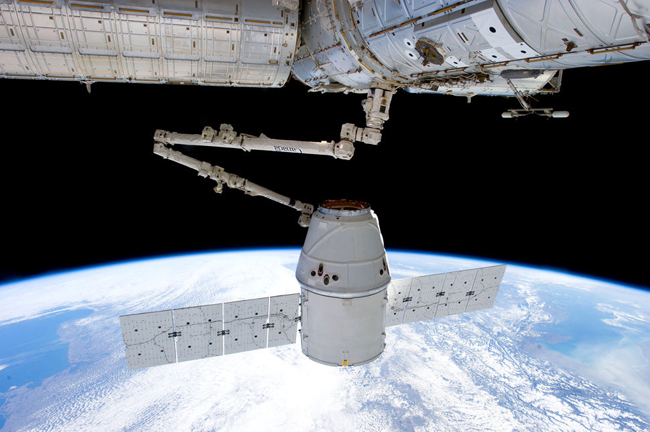
Elon Musk’s SpaceX has already got its Dragon capsule to the International Space Station
With the fall of Communism - Soviet Communism, at least - it seemed all that had passed was the limit of human spaceflight. It had proved too costly. Children who watched the Moon landings came to realise their dreams wouldn’t become reality if left to national programmes. Now a handful of the more successful daydreamers are, at long last, taking matters into their own hands.
They’ve been helped by the falling cost of space technology. They’ve also benefited from freedom from the bureaucracy of massive state-funded agencies and the red tape that bound them. Today’s new wave of space pioneers are well funded from private sources. They’re the tiny mammals to the dinosaurs of NASA and the other official space organisations.
But their long-term goals are no less ambitious. Their early work may be crude and failure rates high, but they are having successes too.
So who are the new space pioneers? The efforts of the wealthy Elon Musk and Richard Branson are well known, but there are a fair few others with their eye on space; some targeting the glamorous business of space tourism, others with more serious, commercial and scientific programmes in mind.
First, then, the teams chasing the media-friendly space tourism opportunities:
Armadillo Aerospace
Having emerged in 2000 from the pile of cash that was John Carmack’s success with iD Software, Armadillo Aerospace ultimately aims to develop a sub-orbital spacecraft for the noble purpose of slinging overweight and overpaying Americans into space so that they can momentarily forget their health issues.
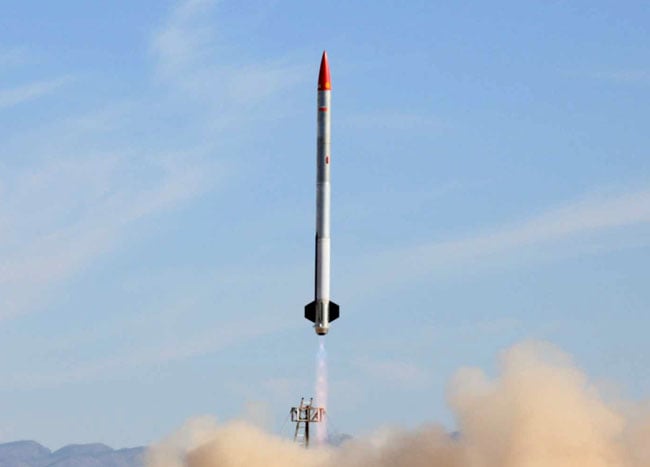
Armadillo’s Stig. Some say...
Although a space-capable craft now seems nowhere in sight, over the years Armadillo has built some interesting kit. In the early days there were several X-Prize vehicles that relied entirely on exhaust vane thrust vectoring for stability control - using fins to guide the rocket blast in order to keep the craft pointing in the right direction. These sub-orbital vehicles have now given way to attempts at a space shot, with its Stig rocket reaching an altitude of 82km in 2012.
Bigelow
In 1999 hotel baron Robert Bigelow envisaged his guests booking into rooms developed from NASA’s cancelled International Space Station (ISS) TransHab programme. Despite his background, Bigelow insists that his inflatable space habitats are destined for more than high-orbital holidays - he claims pharmaceutical research and entertainment applications are all on the cards.
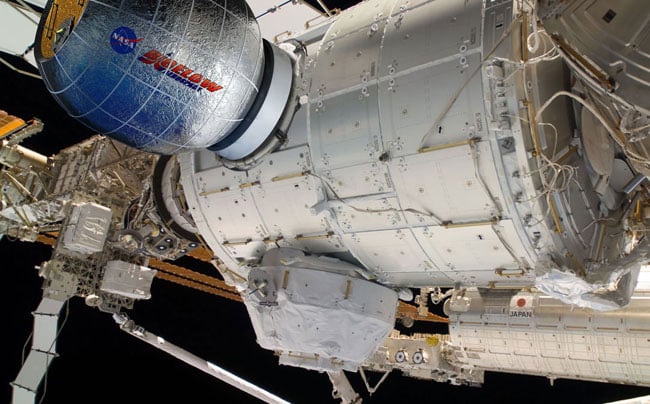
How Bigelow’s BEAM might look when docked to the ISS
Progress over the years has been fruitful. Experimental modules Genesis I and II have been in orbit since 2006-7. NASA has awarded Bigelow a $17.8m contract to put the Bigelow Expandable Activity Module (BEAM) into space as an annex to the ISS in 2015. The catch, however, is that Bigelow has no intention of developing its own launch system, so it must rely on other commercial ventures to succeed in building a suitable vehicle
Mars One
While not strictly tourism, I’m going to lump this one straight in with the tat. Mars One is essentially an interplanetary mashup of X-Factor and Big Brother, with candidates being selected by web vid audiences and the whole mission being broadcast live 24/7.
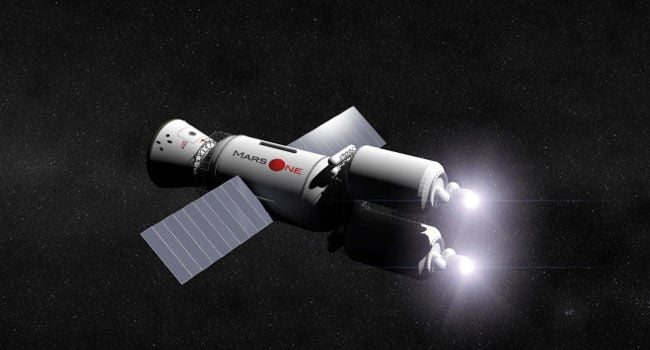
Mars One’s Mars Transit Vehicle hasn’t yet got past the CGI stage
The intention is to have humans on Mars by 2023 through a series of one-way missions where the colonists will remain on the red planet with no plan (or hope) of returning. A number of supply missions are planned and the colony is to grow from four to 20 inhabitants over ten years.
Criticism of the scheme comes largely from those who question the viability of raising the necessary capital solely from advertising, donations, merchandise sales and licensing of media rights. Time scales are a further issue, and although Mars One has identified many likely suppliers for the individual components required to fulfil the mission, it hasn’t yet entered into contracts with any of them.
Virgin Galactic
Arguably the most famous and well funded of the new private space endeavours is mogul Sir Richard Branson’s tourism arm, Virgin Galactic, featuring the Burt Rutan-designed, Scaled Composites-built SpaceShipTwo and its launch counterpart, WhiteKnightTwo. With a reported 600 punters already said to have forked out at least £120,000 each for a two-hour trip to experience total weightlessness, it certainly seems there are plenty of folk keen to try it out.
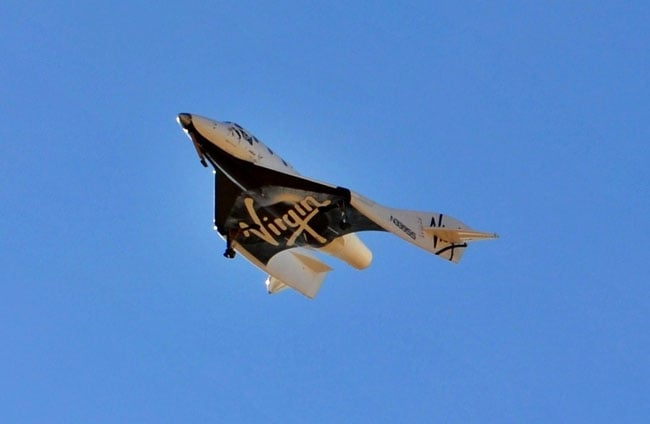
Virgin Galactic’s SpaceShipTwo
Developed from the $10m X-Prize winning SpaceShipOne, the craft carries two pilots and six passengers to 50,000 feet under the wings of WhiteKnightTwo before igniting its hybrid rocket motor. Following a minute or so of powered flight the spaceship will coast to a target altitude of 110km at a peak velocity of roughly 1.2km/s (4,200km/h, or 2,600mph), putting it firmly in the sub-orbital class. To give an idea of what would be needed to make the jump to hyperspace orbital capability, a low Earth orbit requires velocities in the region of 7-8km/s to maintain free-fall without fiery impact.
Not everyone is jumping on board the tourism train: there are a few private space outfits hoping to make technological advances without drawing the stigmatised “populist” epithet.
Excalibur Almaz
With the origins of its technology clouded in 1960s Soviet secrecy (since declassified), Excalibur Almaz was founded in 2005 and states its goal as achieving “affordable and reliable transportation of humans and cargo to Low Earth Orbit, libration point, the Moon and beyond.”
Having bought the remnants of the Almaz programme from Roscosmos, the firm has the distinct advantage of being in possession of hardware that has already been flight proven. Incidentally, the “libration point” is the spot between the Earth and the Moon where the two bodies’ gravitational pulls match and effectively cancel each other out.
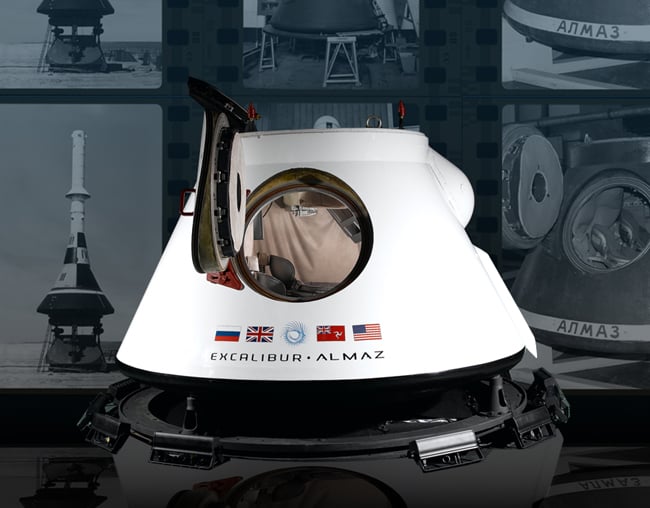
Designed for Russia’s moon shot, now being readied for commercial use
The key piece of kit acquired is the VA capsule, initially developed for the Soviet Moon shot and bearing a striking resemblance to the hardware used for the same purpose on Apollo. Now that they’ve blown out the cobwebs and updated the electronics and control systems, Excalibur reckons that it will be good to go by the middle of the decade.
Masten Space Systems
Originally hailing from Santa Clara and now headquartered in Mojave, Masten has developed a number of prize-winning rocket craft. The firm is focused on VTVL (Vertical Take-off, Vertical Landing) capabilities for sub-orbital science missions which it hopes will eventually lead to orbital endeavours.
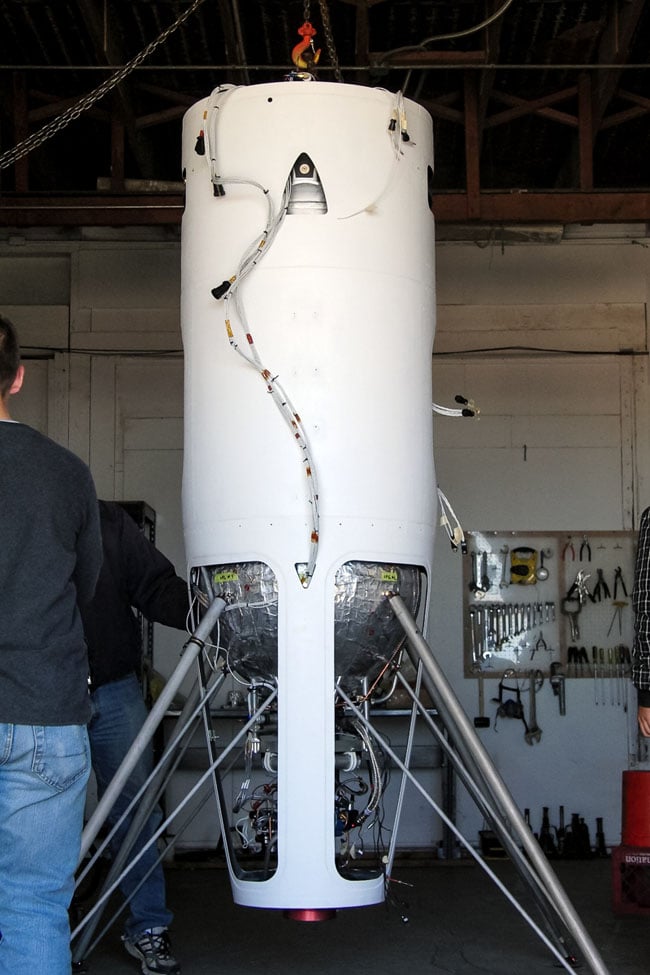
Aiming for 6km: Xaero-B
In 2009, Masten’s Xombie and Xoie vehicles competed in the Lunar Challenge X Prize, between them taking home $1.15m in winnings and beating Armadillo Aerospace while they were about it. More recently, the Xaero craft completed 110 successful sub-kilometre test flights before a stuck throttle valve caused its destruction on the subsequent 1km attempt. Its successor, Xaero-B, is currently undergoing preflight testing with a view to reaching 6km.
On an altogether grander scale, Masten is also developing Xeus, effectively a Centaur rocket upper stage - as used on Atlas, Titan and Saturn rockets in the past - with retrofitted VTVL capability. Initial estimates suggest that such a vehicle would be capable of delivering and returning a five tonne payload on a Lunar mission.
Reaction Engines
At home in Oxfordshire, Reaction Engines has two major projects in its portfolio: the Sabre engine and the Skylon spaceplane, both reliant on Reaction’s novel heat exchanger technology.
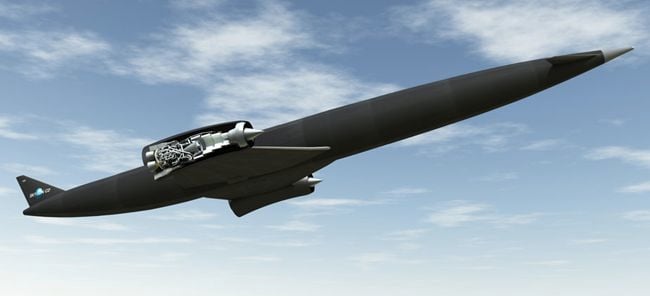
Shuttle, Euro-style: Reaction Engines’ Skylon
This is all some years away from completion but Reaction is making real progress. Last year it successfully tested the intricate windings of 1mm diameter pipe that make up its liquid helium precooler. This will eventually be mounted in the intake tract of the Sabre (Synergistic Air-Breathing Rocket Engine) where it will cool down the incoming hypersonic air to allow atmospheric oxygen to be compressed and burned with liquid hydrogen in the rocket engine.
However, Reaction Engines currently relies almost entirely on public grants for funding. Fortunately, the European Space Agency (ESA) has taken a shine to Skylon and has just thrown €1 million (£860,000) into the development pot.
Sierra Nevada Corporation
In 2008, Dream Chaser developer SpaceDev was subsequently acquired by Sierra Nevada Corporation, a specialist maker of electronic systems for the space and energy sectors. Taking on Dream Chaser represented a major shift for SNC towards a serious space hardware, and the company was able to collect $212m in seed funding from NASA’s Commercial Crew Integrated Capability programme.
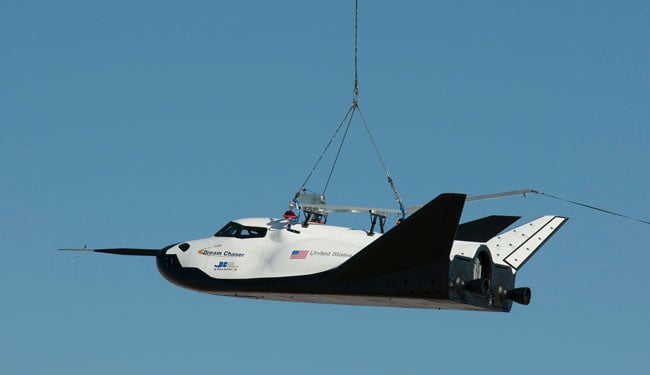
Dream Chaser in carry testing
Source: NASA/Carla Thomas
Dream Chaser is a vertical take-off, horizontal landing type – in many ways similar to the Space Shuttle or the Boeing X-37. In fact, exactly like the X-37, Dream Chaser will launch atop an Atlas V rocket, but instead of a secretive military payload, there will be seats for seven passengers. It’s a sort of an orbital minibus, really. More similarities with the Space Shuttle include Dream Chaser’s ablative thermal protection system and an ability to land on any runway suited to commercial air traffic. While relatively inexpensive to make, the ablative tiles will need to be regularly replaced, often after only a few flights.
Dream Chaser is powered by two HTPB (hydroxyl-terminated polybutadiene) and nitrous oxide hybrid rocket motors, which may sound familiar to folk following the technical specifications of Virgin Galactic’s SpaceShipTwo. This is no coincidence, as SNC is building the hybrid motors for Branson.
SpaceX
SpaceX is possibly the most technologically successful competitor in the private space game. It’s run by billionaire Elon Musk, he of Hyperloop high-speed transit system and Tesla e-car fame. Having successfully orbited a large cheese and resupplied the International Space Station, SpaceX has its sights on manned flights within two years and a voyage to Mars shortly afterwards.
The SpaceX portfolio consists of three vehicles: Falcon 9, Falcon Heavy and Dragon. Falcon 9 features nine - hence the name - of SpaceX’s Merlin engines in its first stage (just one in the second), allowing it to carry payloads of 13 tonnes to low Earth orbit. Falcon Heavy adds a booster stage made up of an additional two Falcon 9 first stages for a total of 28 Merlins. It’s capable of putting 53 tonnes of stuff into low Earth orbit, which is the largest payload capacity since the Apollo programme’s Saturn V. Dragon is the capsule that sits on top of either Falcon.
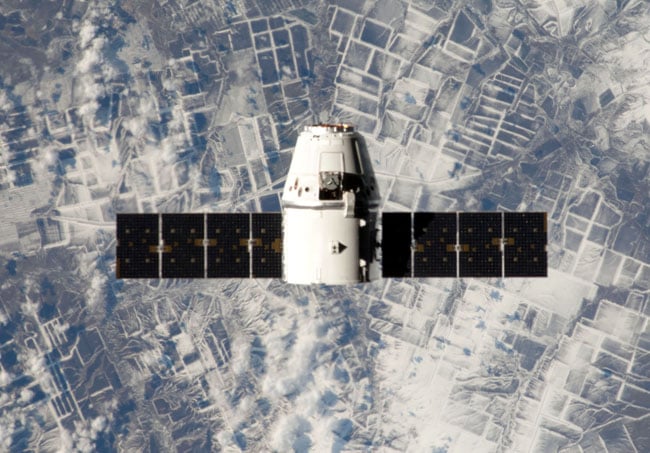
Space transport: SpaceX’s Dragon - aka CRS2
Once Dragon qualifies for manned flight, the Falcon Heavy becomes an interplanetary transporter capable of taking crewed missions to the Moon and Mars. Off in the distance is the currently conceptual Mars Colonial Transporter, another Musk project shrouded in secrecy until it’s fit for a full unveiling – slated to take place later this year.
Virgin Galactic
Yes, Virgin Galactic does feature twice on this list but there’s a good reason for it. In addition to launching SpaceShipTwo and its postcard punters, the WhiteKnightTwo air lifter is also capable of providing a platform for something else: orbital satellite launches onboard LauncherOne.
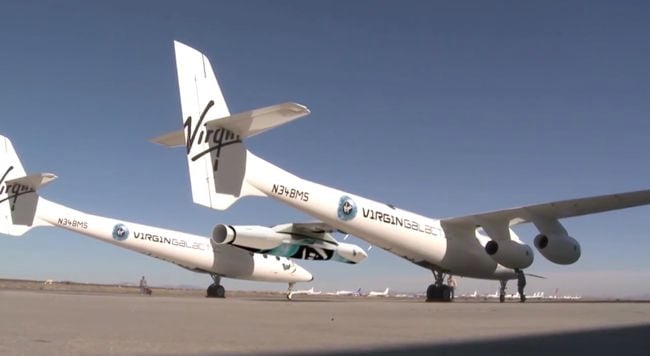
Mounted on WhiteKnightTwo: Virgin’s satellite-shifting LauncherOne
With a two-stage configuration to be air-launched from 50,000 feet, LauncherOne is specified to be capable of delivering 225kg to a low inclination orbit, with this figure dropping to around 100kg for a 98-ish degree Sun synchronous orbit. Hopefully LauncherOne will be more successful in garnering demand than rival air launch system, Orbital Sciences’ Pegasus.
XCOR Aerospace
Emerging in 1999 from the remnants of Rotary Rocket, XCOR is currently developing a sub-orbital spaceplane called Lynx. Although Lynx is not being pitched at space tourists, there is one passenger seat available alongside the payload bay. It’s currently offering tickets at $95,000 a pop.
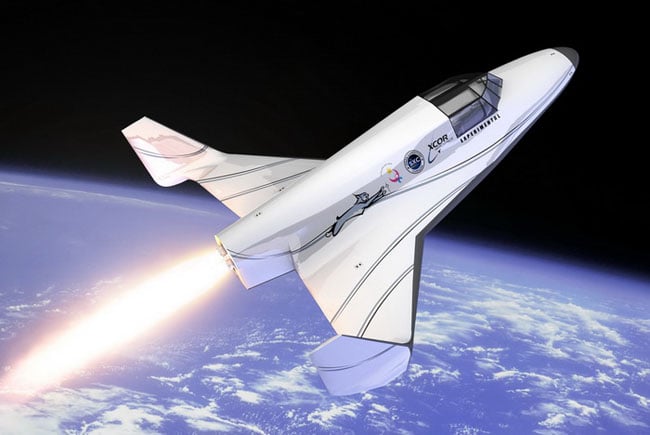
In development: XCOR’s Lynx spaceplane
While Lynx is in development, XCOR has seen success in developing custom rocket engines for its customers, among them Lockheed Martin and Boeing joint-venture United Launch Alliance, which uses updates of the old Altas and Delta rockets. Additionally, XCOR designs, manufactures and sells low-cost, lightweight piston propellant pumps for a range of rocketry applications.
Perhaps the most promising of XCOR’s innovations is a new fluoropolymer composite material, rather creatively called “Nonburnite” for its flame-resistant properties. As it turns out, Nonburnite is also lightweight with high tensile strength and minimal thermal thermal expansion, making it ideally suited to the liquid oxygen storage tanks that are so integral to XCOR’s rocket engines. ®